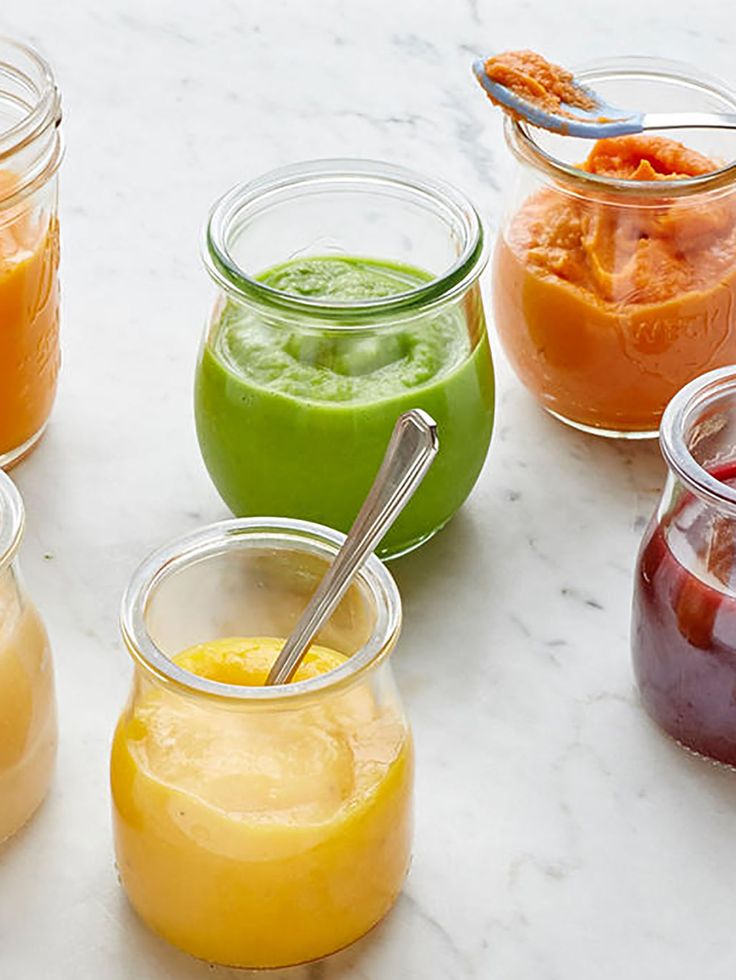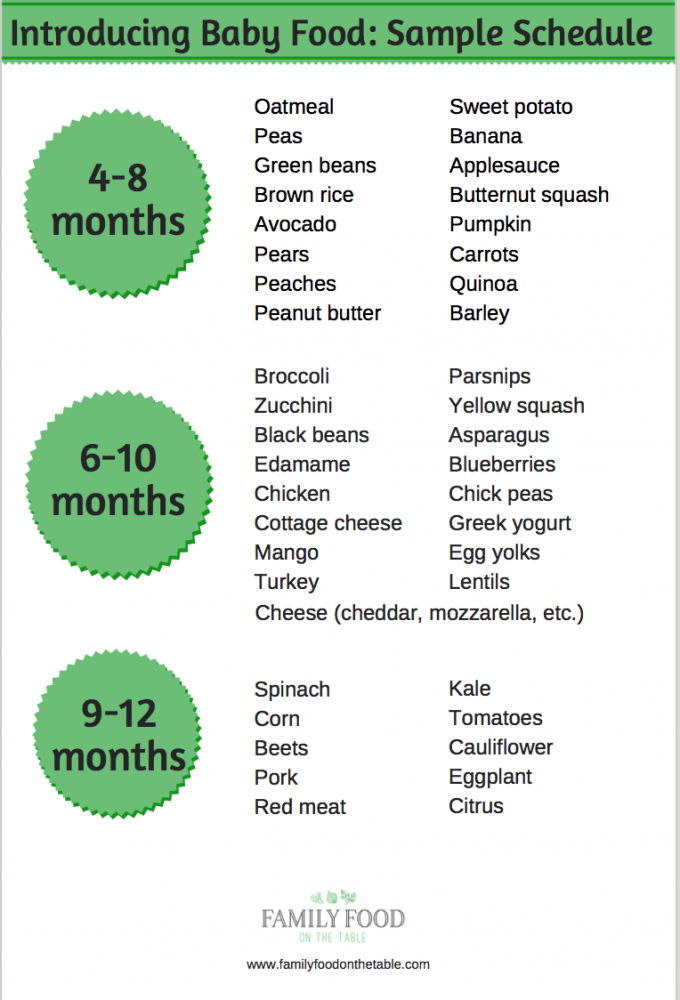Feeding babies watermelon
Watermelon for Babies - Can Babies Eat Watermelon?
When can babies eat watermelon?
Watermelon may be introduced as soon as a baby is ready to start solids, which is generally around 6 months of age. Note that the juices of watermelon often cause a fair amount of gagging in babies and toddlers.
Where does watermelon come from?
Today, watermelon is the quintessential hot weather treat: brightly colored and refreshingly crunchy and juicy. But in Africa, where the watermelon originated, it served much more practical purposes. In a hot, dry climate, the melon’s thick rind and moisture-rich interior made it a valuable source of water when and where people needed it.
Our modern watermelons are the result of thousands of years of change and human tinkering. Those early African watermelons had green flesh that was much firmer and more bitter or bland than those of today. Now, naturally seedless watermelons have eliminated those hard, black seeds, and the melon’s colors, shapes, and sizes have expanded far past the traditional dark greens and deep reds. Some melons are small enough to easily fit in the fridge, while others can weigh hundreds of pounds, and the color of watermelon flesh ranges from delicate pinks to dark reds, pale yellows, peachy oranges, and even white. Watermelon rind, seeds, and flesh are all edible: the rind is often pickled, fermented, candied, or stir-fried, the seeds can be roasted, and the flesh, while often just eaten fresh, can be grilled or added to salads.
Is watermelon healthy for babies?
Yes. Watermelon boasts the powerful antioxidant lycopene (with higher levels in red watermelon than in tomatoes) and other phytonutrients, such as beta-carotene, that support immune function, and a unique amino acid called citrulline that may promote healthy blood pressure.1 2 3 Watermelon also contains some vitamin C, which can support iron absorption from plant-based foods, so think about pairing watermelon with ingredients like quinoa, lentils, chia seeds, or leafy greens.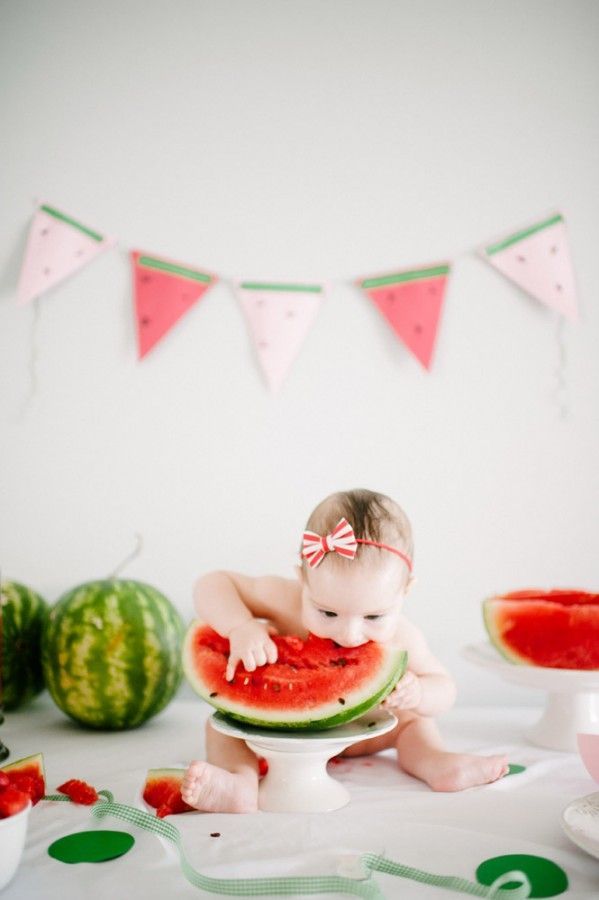 4
4
In many cultures, it is quite common to consume watermelon rinds in a variety of ways, such as pickled, fermented, stewed, stir-fried, candied, or made into a jam. Offering fiber, vitamins, and minerals, watermelon rinds also contain the amino acid citrulline, which means the rind may be as beneficial for blood pressure as watermelon flesh.5 6 While a taste of pickled, fermented, candied, or jam renditions of watermelon rind here or there is fine once in a while, hold off until after the child’s first birthday to serve these products regularly to minimize baby’s exposure to salt and sugar.
Melons are susceptible to bacteria. Whole watermelon can be stored at room temperature until ripe (usually about 1 to 2 days from the date of purchase) after which time it should be transferred to the refrigerator. Once cut, store watermelon in an air-tight container in the fridge for up to 3 days. To extend the shelf life, blend watermelon flesh, strain out the seeds, and freeze the juice for up to 1 year.
★Tip: When shopping for watermelon, consider choosing whole melon over pre-cut. Pre-cut melon has been associated with a number of outbreaks related to salmonella infection.7 For this reason you should always wash the rinds of all melons before cutting into them.
Is watermelon a common choking hazard for babies?
While watermelon is not typically considered to be a common choking risk, it can be a challenging food for young babies and watermelon seeds can pose an aspiration risk.8 9 10 11 Watermelon is a “mixed consistency,” which means it has both solid parts that need to be chewed and a high amount of liquid which moves differently than the solids as baby chews. This tends to cause a fair amount of coughing and gagging when it is eaten as baby learns to manage both a solid consistency and the juice at the same time. To minimize risk for young babies, serve seedless watermelon on the rind (with the rind cut into large, thick pieces) with much of the fruit cut off so baby can use the rind more like a teether. As always, make sure you create a safe eating environment and stay within an arm’s reach of baby during meals. For more information on choking, visit our sections on gagging and choking and familiarize yourself with the list of common choking hazards.
As always, make sure you create a safe eating environment and stay within an arm’s reach of baby during meals. For more information on choking, visit our sections on gagging and choking and familiarize yourself with the list of common choking hazards.
Is watermelon a common allergen?
No, watermelon is not considered to be a common allergen. However, some individuals with grass or ragweed allergies or Oral Allergy Syndrome (also called pollen-food allergy syndrome) may be sensitive to watermelon.12 13 Oral Allergy Syndrome typically results in short-lived itching, tingling, or burning in the mouth and is unlikely to result in a dangerous reaction. Individuals with known allergies to latex, avocado, banana, tomato, kiwi, and other melons may also be sensitive to watermelon.
As you would when introducing any new food, start by offering a small quantity for the first few servings. If there is no adverse reaction, gradually increase the quantity over future meals.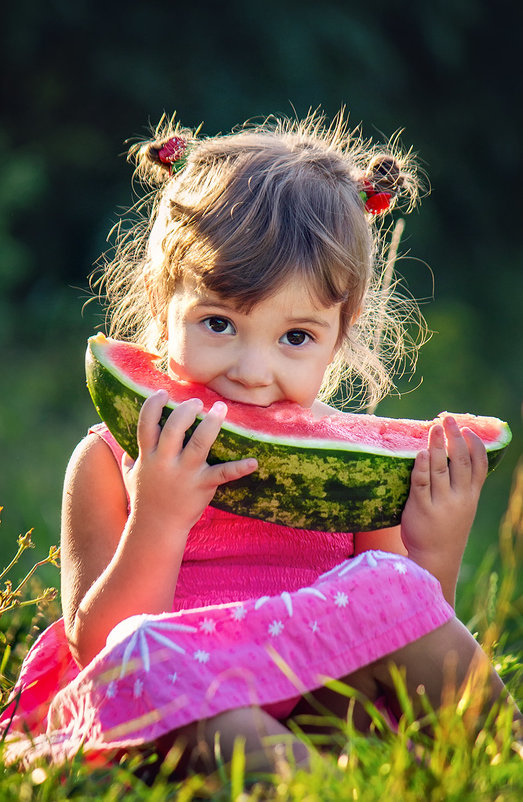 14
14
Can watermelon cause diarrhea in babies?
Yes. Watermelon is over 90% water, which helps promote healthy digestion, especially if baby is experiencing harder stools.15 When a significant quantity is consumed, it is not unusual to see looser stools. When that poop does come, know that red-fleshed watermelon can result in red-pigmented stool; don’t worry, it isn’t blood.
How do you prepare watermelon for babies with baby-led weaning?
Every baby develops on their own timeline, and the suggestions on how to cut or prepare particular foods are generalizations for a broad audience. Your child is an individual and may have needs or considerations beyond generally accepted practices. In determining the recommendations for size and shape of foods, we use the best available scientific information regarding gross, fine, and oral motor development to minimize choking risk. The preparation suggestions we offer are for informational purposes only and are not a substitute for child-specific, one-on-one advice from your pediatric medical or health professional or provider.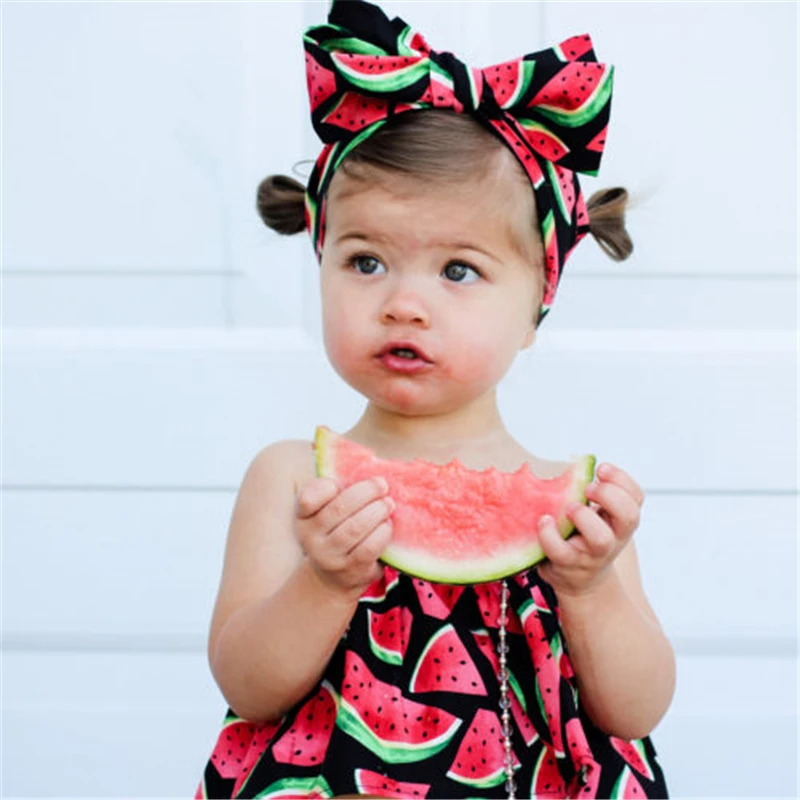 It is impossible to fully eliminate all risk of a baby or child choking on any liquid, puree, or food. We advise you to follow all safety protocols we suggest to create a safe eating environment and to make educated choices for your child regarding their specific needs. Never disregard professional medical advice or delay in seeking it because of something you have read or seen here.
It is impossible to fully eliminate all risk of a baby or child choking on any liquid, puree, or food. We advise you to follow all safety protocols we suggest to create a safe eating environment and to make educated choices for your child regarding their specific needs. Never disregard professional medical advice or delay in seeking it because of something you have read or seen here.
6 to 8 months old: You have two options: Serving watermelon on a large rind with most of the fruit cut off (so the rind acts more as a teether) or offering watermelon sticks about the width of two fingers pressed together, and about the thickness of a ruler, without the rind. If baby is just getting started on solids, serving on the rind may be easier for them to pick up and manage in the mouth. This also acts as an “unbreakable” food for baby to practice the skills of chewing and moving the tongue. If baby is closer to 8 months old or has strong biting skills, you may want to serve a rectangular piece without the rind. Also keep in mind that watermelon is a “mixed consistency,” with liquid and chewable components. This tends to lead to coughing as baby learns to manage both consistencies in the mouth at the same time.
Also keep in mind that watermelon is a “mixed consistency,” with liquid and chewable components. This tends to lead to coughing as baby learns to manage both consistencies in the mouth at the same time.
To serve the rind: First, wash the melon before cutting into it. Offer baby a thick watermelon rind at least an inch thick and a few inches long with a small amount of fruit flesh left on (about 1 inch or less). If the rind is long and curved, cut a bit of each end off so it’s more straight as a piece. Also, if there are any sharp corners, simply slice them off or blunt to soften (pounding the corner on a cutting board can do the trick). Over time, as baby’s skills build and your confidence in baby’s ability to handle more challenge increases, you can leave on more and more of the flesh on the rind. Foods like watermelon rinds that act like teethers are fantastic for developing the oral motor skills needed to chew and move food around in the mouth for swallowing. If baby is able to bite off a piece of the rind, remain calm and give baby a chance to work the piece out of their mouth independently. You can lean them forward or kneel next to them so they look down, allowing gravity to help move the piece forward. Then, take the rind away from baby and move on to the next age bracket for serving suggestions.
You can lean them forward or kneel next to them so they look down, allowing gravity to help move the piece forward. Then, take the rind away from baby and move on to the next age bracket for serving suggestions.
To serve watermelon sticks: The sticks should be about the size of two adult fingers together, or a larger piece about the size of a deck of cards for baby to hold with two hands. Remove any seeds as you cut. Remember, it’s common for watermelon juices to cause a fair amount of coughing and gagging. If a too-big piece of flesh breaks off, stay calm and give baby a chance to work it forward independently before intervening. Baby’s gag reflex is very active to help keep things away from their airway, but if you feel that baby is struggling excessively with watermelon served in this way, return to watermelon served on the rind with only a small amount of flesh for a little longer, or avoid this food entirely for a few more weeks before trying again.
9 to 14 months old: Offer watermelon sticks about the size of two adult fingers together or watermelon cut into small, bite-sized pieces.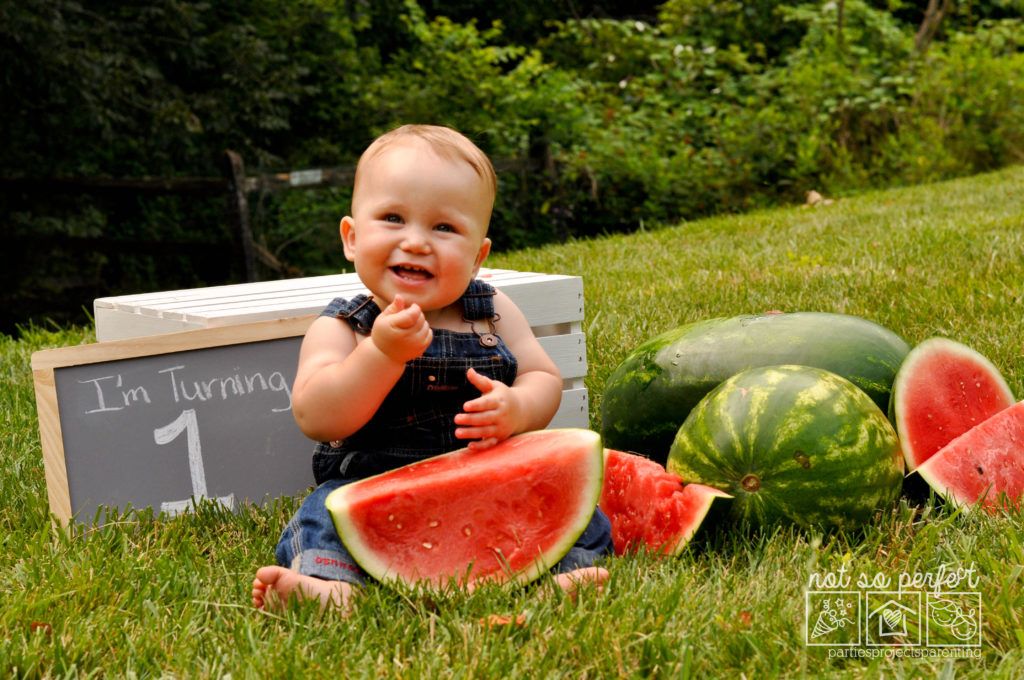 If you’d like to continue serving watermelon on the rind, by all means do so; serving on the rind can be a good strategy for babies and toddlers who shovel too much food in their mouths at once. Keep in mind that while the rind helps some 9–14-month-old babies manage this challenging mixed consistency food, others may be strong enough to bite through the rind by this age. If this happens, stay calm, let baby work it forward and out then consider removing the watermelon rind and instead offering bite-sized pieces or sticks. Either way, know that as baby becomes more confident in their biting skills, they may bite off a piece that makes you uncomfortable. Trust your baby to chew the fruit, and if needed, allow them to spit it out on their own before intervening.
If you’d like to continue serving watermelon on the rind, by all means do so; serving on the rind can be a good strategy for babies and toddlers who shovel too much food in their mouths at once. Keep in mind that while the rind helps some 9–14-month-old babies manage this challenging mixed consistency food, others may be strong enough to bite through the rind by this age. If this happens, stay calm, let baby work it forward and out then consider removing the watermelon rind and instead offering bite-sized pieces or sticks. Either way, know that as baby becomes more confident in their biting skills, they may bite off a piece that makes you uncomfortable. Trust your baby to chew the fruit, and if needed, allow them to spit it out on their own before intervening.
15 to 24 months old: At this age, you can either serve watermelon in small bite-sized pieces, or in the classic triangular pieces, with the rind on (it is edible, so don’t worry if the child teethes and munches on that part). If the child successfully bites off too-big pieces of the rind, simply cut some of the rind off before serving. In the dead of summer with a teething toddler? Puree watermelon and freeze into small popsicles for a tasty teething treat—or just insert a popsicle stick into a wedge of watermelon and freeze.
If the child successfully bites off too-big pieces of the rind, simply cut some of the rind off before serving. In the dead of summer with a teething toddler? Puree watermelon and freeze into small popsicles for a tasty teething treat—or just insert a popsicle stick into a wedge of watermelon and freeze.
If you’re stuck in a puffs and pouches rut, check out our 100 Snacks for Babies & Toddlers.
Recipe: Watermelon Dusted with Ground Nuts
Yield: 1 cup (125 grams)
Cooking Time: 5 minutes
Age: 6 months+
Ingredients
- 1 watermelon wedge (150 grams)
- 1 tablespoon (8 grams) ground almond, macadamia nut, or nut of choice
This recipe contains an ingredient that is a common allergen: almond, macadamia nut, or other tree nuts.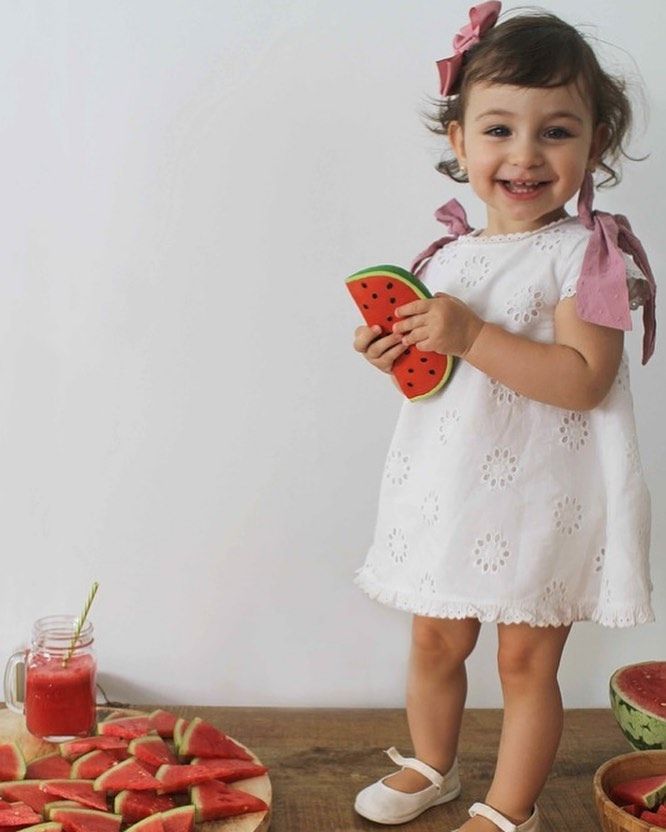 Only serve to a child after this allergen has been introduced safely.
Only serve to a child after this allergen has been introduced safely.
Directions
- Rinse the watermelon wedge.
- Cut off and discard the rind and white pith, or reserve for another use.
- For younger babies, cut the watermelon flesh into rectangular pieces about the size of a deck of cards, or if you’d like to go smaller, a shape that is about the same size as two adult fingers pressed together. Check that all seeds have been removed from the strips. For 9 months and up, you can cut the watermelon into bite-sized pieces.
- Roll the watermelon pieces in ground almond or nut of choice.
- Serve and let the child self-feed by passing the pieces of watermelon over to baby in the air and waiting for the child to grab from you.
To Store: Store any leftover watermelon in an air-tight container in the refrigerator for up to 1 week.
★Tip: When choosing a watermelon, it should feel firm and heavy for its size. A good sign of a ripe and sweet watermelon is the presence of a “sugar spot,” which is the yellow spot on its underside, which indicates the melon has spent enough time ripening.
Flavor Pairings
Watermelon has a sweet, juicy crispness tastes great with fresh herbs like cilantro, parsley, and mint, as well as creamy cheeses like goat cheese and feta, and hot spices like cayenne. The flavors of watermelon also pair well with pistachios, walnuts, honey, vinegar, citruses like lemon and lime, rosewater, and orange blossom water.
Reviewed by
J. Truppi, MSN, CNS
V. Kalami, MNSP, RD, CSP
K. Grenawitzke, OTD, OTR/L, SCFES, IBCLC, CNT
S. Bajowala, MD, FAAAAI. Board-Certified Allergist & Immunologist (allergy section)
R. Ruiz, MD, FAAP. Board-Certified General Pediatrician & Pediatric Gastroenterologist
- Tamburini, E., Costa, S., Rugiero, I., Pedrini, P., & Marchetti, M. G. (2017). Quantification of Lycopene, β-Carotene, and Total Soluble Solids in Intact Red-Flesh Watermelon (Citrullus lanatus) Using On-Line Near-Infrared Spectroscopy, Sensors, 17(4), 746.
 DOI: 10.3390/s17040746. Retrieved June 23, 2021.
DOI: 10.3390/s17040746. Retrieved June 23, 2021. - Naz, A., Butt, M. S., Sultan, M. T., Qayyum, M. M., & Niaz, R. S. (2014). Watermelon lycopene and allied health claims, EXCLI Journal,13, 650–660. Retrieved June 23, 2021.
- Figueroa, A., Wong, A., Jaime, S. J., & Gonzales, J. U. (2017). Influence of L-citrulline and watermelon supplementation on vascular function and exercise performance. Current opinion in clinical nutrition and metabolic care, 20(1), 92–98. DOI: 10.1097/MCO.0000000000000340. Retrieved June 23, 2021.
- National Institutes of Health. (2021). Iron. Retrieved June 23, 2021.
- Rimando, A. M., & Perkins-Veazie, P. M. (2005). Determination of citrulline in watermelon rind. Journal of chromatography, 1078(1-2), 196–200. DOI: 10.1016/j.chroma.2005.05.009. Retrieved June 23, 2021.
- Naknaen, P., Itthisoponkul, T., Sondee, A., & Angsombat, N. (2016). Utilization of watermelon rind waste as a potential source of dietary fiber to improve health promoting properties and reduce glycemic index for cookie making.
 Food science and biotechnology, 25(2), 415–424. DOI: 10.1007/s10068-016-0057-z. Retrieved June 23, 2021.
Food science and biotechnology, 25(2), 415–424. DOI: 10.1007/s10068-016-0057-z. Retrieved June 23, 2021. - Centers for Disease Control and Prevention. (2019). Outbreak of Salmonella Infections Linked to Pre-Cut Melons. Retrieved June 23, 2021.
- Eren S, Balci AE, Dikici B, Doblan M, Eren MN. (2003). Foreign body aspiration in children: experience of 1160 cases. Annals of Tropical Paediatrics, 23(1), 31-7. DOI: 10.1179/000349803125002959. Retrieved June 30, 2021
- Mallick MS. (2014). Tracheobronchial foreign body aspiration in children: A continuing diagnostic challenge. Afr J Paediatr Surg, 11(3):225-8. DOI: 10.4103/0189-6725.137330.
Retrieved July 8, 2021 - Chik KK, Miu TY, Chan CW. (2009). Foreign body aspiration in Hong Kong Chinese children. Hong Kong Med J, 15(1):6-11. Retrieved July 8, 2021
- Aydoğan LB, Tuncer U, Soylu L, Kiroğlu M, Ozsahinoglu C. (2006). Rigid bronchoscopy for the suspicion of foreign body in the airway.
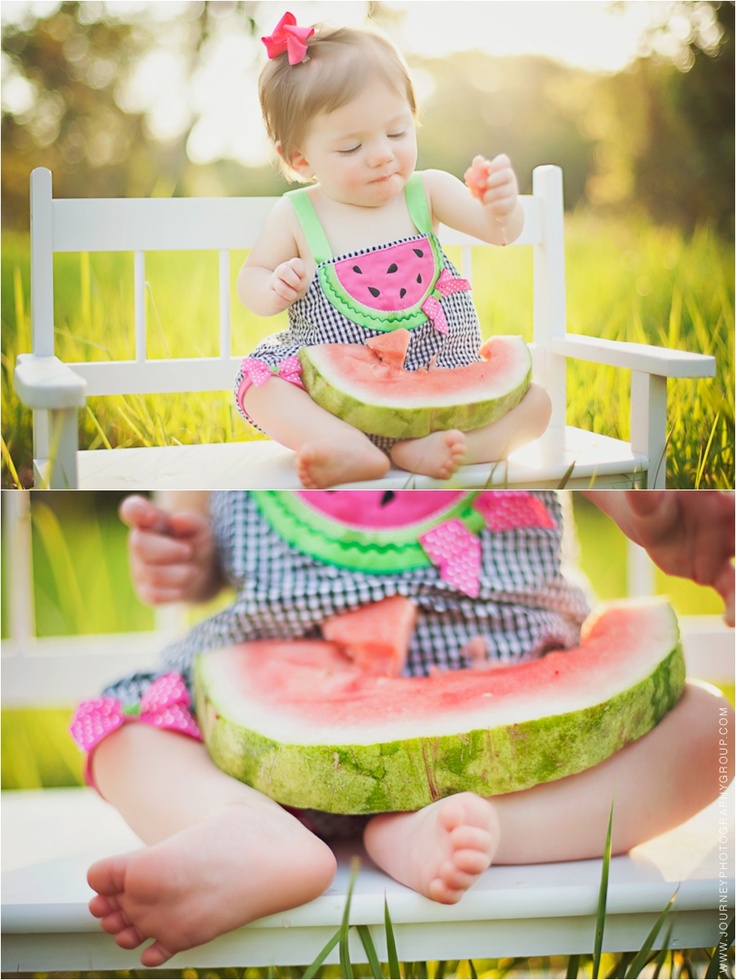 Int J Pediatr Otorhinolaryngol. 70(5):823-8. DOI: 10.1016/j.ijporl.2005.09.010. Retrieved July 8, 2021
Int J Pediatr Otorhinolaryngol. 70(5):823-8. DOI: 10.1016/j.ijporl.2005.09.010. Retrieved July 8, 2021 - American Academy of Allergy, Asthma & Immunology. (2020). Oral allergy syndrome (OAS). Retrieved June 23, 2021.
- Kato T, Tajima N, Kitamura K, Takasato Y, Tajima I, Ono M, Tagami K, Sakai K, Furuta T, Sugiura S, Ito K. (2018). [Oral and systemic symptoms in children with fruit allergy]. Arerugi, 67(2):129-138. Japanese. DOI: 10.15036/arerugi.67.129. Retrieved June 23, 2021.
- Rodriguez J, Crespo JF, Burks W, Rivas-Plata C, Fernandez-Anaya S, Vives R, Daroca P. (2000). Randomized, double-blind, crossover challenge study in 53 subjects reporting adverse reactions to melon (Cucumis melo). Journal of Allergy and Clinical Immunology, 106(5), 968-72. DOI: 10.1067/mai.2000.110467. Retrieved June 30, 2021.
- U. S. Department of Agriculture. (2019). Watermelon, raw. FoodData Central. Retrieved July 2, 2021
When Is It OK for Babies to Eat Watermelon?
Written by WebMD Editorial Contributors
Reviewed by Dan Brennan, MD on February 27, 2021
In this Article
- Introducing Babies to Watermelon
- Nutritional Benefits of Watermelon for Babies
- How to Prepare Watermelon for Babies
- Watermelon Safety Precautions for Babies
Watermelon is a favorite summer treat for many families.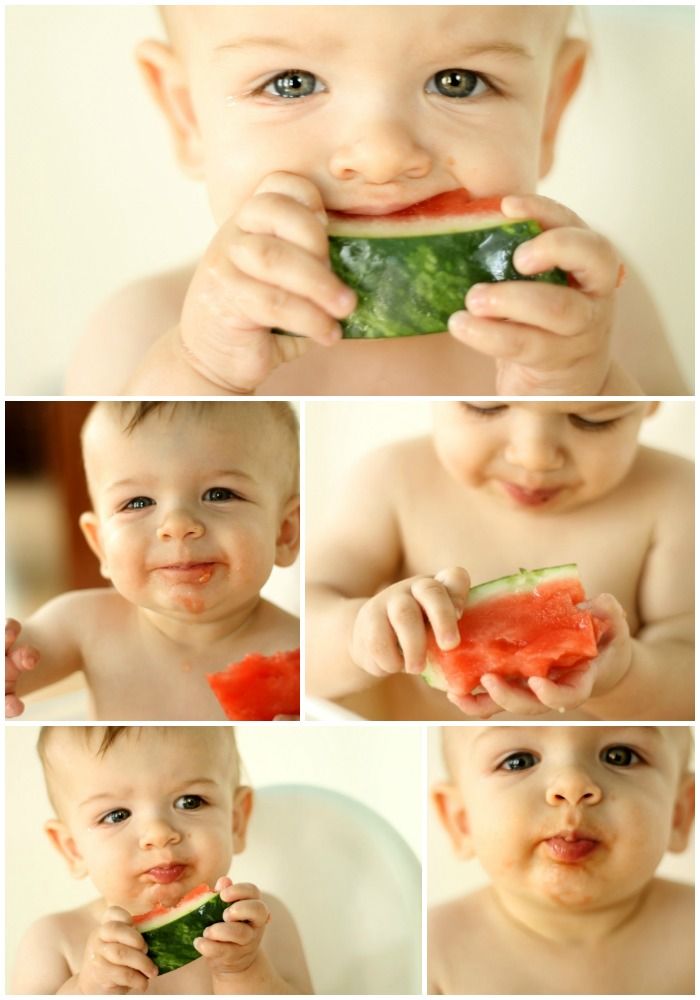 It’s sweet and healthy and a great way to cool down, but before you feed it to your young child, learn when you can safely feed your baby watermelon and safety precautions to take with it.
It’s sweet and healthy and a great way to cool down, but before you feed it to your young child, learn when you can safely feed your baby watermelon and safety precautions to take with it.
Introducing Babies to Watermelon
The biggest concern when you’re introducing new foods to your baby is whether they will be able to digest it. Your baby’s stomach is delicate, and it takes time for them to adjust to solid food. Some foods, like honey, shouldn’t be introduced until your baby is at least a year old.
Luckily, you don’t have to wait that long to introduce your baby to watermelon. In fact, watermelon is one of the first foods you can give your little one. The American Academy of Pediatrics recommends introducing your child to solid foods, including pureed fruits and vegetables, at about six months. They also recommend that you offer your baby food with different textures so they learn these textures early.
Watermelon is a good early food to offer your baby. It’s soft and watery, so it shouldn’t be too difficult for your baby to chew and swallow. It’s also sweet, which many babies like.
It’s also sweet, which many babies like.
Nutritional Benefits of Watermelon for Babies
Watermelon is loaded with micronutrients like vitamins and minerals that will help your baby grow and develop.
For example, watermelon has more than 470 micrograms of beta carotene per cup. Beta carotene is an important antioxidant that your body converts into vitamin A. Getting enough vitamin A helps your baby’s eyes grow and develop and it’s necessary for the lungs, kidneys, heart, and immune system to work properly. Giving your baby watermelon can give them the vitamins they need to stay healthy.
Watermelon is also an easy way to make sure your baby stays hydrated. Especially during warmer months, it’s important to make sure your baby drinks enough. Watermelon is more than 90% water. If your child is fussy or doesn’t like drinking water, feeding them watermelon can help them get the liquids they need.
How to Prepare Watermelon for Babies
When your baby is first exploring solid foods, there are a few common ways to prepare fruits like watermelon.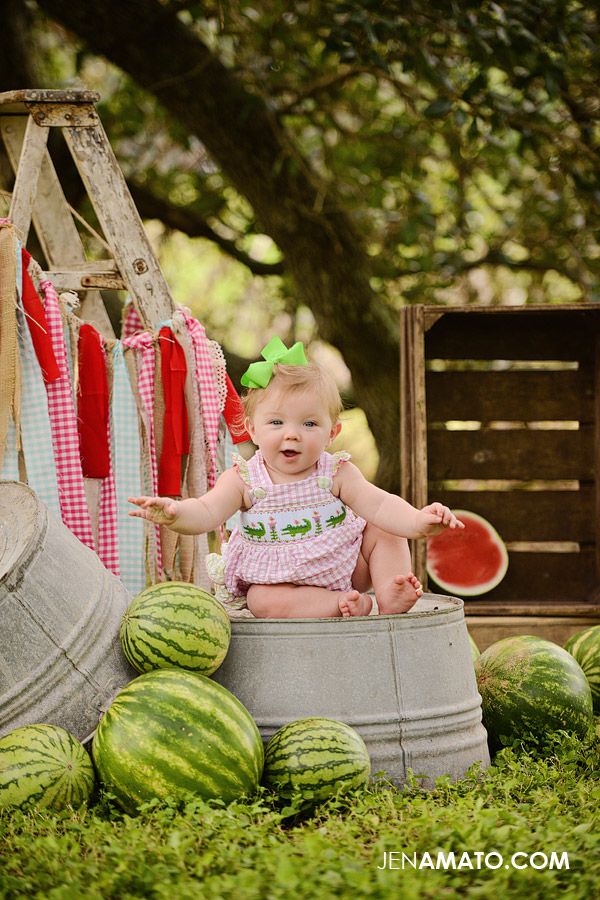 For example, mashing food until it’s smooth is the easiest way to help them try food without having to chew. Watermelon can easily be mashed and blended to make it easy for infants to try.
For example, mashing food until it’s smooth is the easiest way to help them try food without having to chew. Watermelon can easily be mashed and blended to make it easy for infants to try.
Slightly older babies who can handle lumpier foods may enjoy small chunks of watermelon. Make sure that the pieces are small enough that your child won’t choke on them. Only feed them one chunk at a time and keep an eye on your baby while they’re eating.
It’s important to serve your baby watermelon without seeds. Even if you buy seedless watermelon, check it for seeds, which may cause your child to choke. If you mash your watermelon, strain it to remove any seeds before you feed it to your baby.
Watermelon Safety Precautions for Babies
Taking the right safety measures can help your little one try watermelon without risking their health or safety. Here are three things to consider before feeding your baby watermelon:
Diseases. Raw fruits and vegetables carry the risk of diseases like salmonella and E.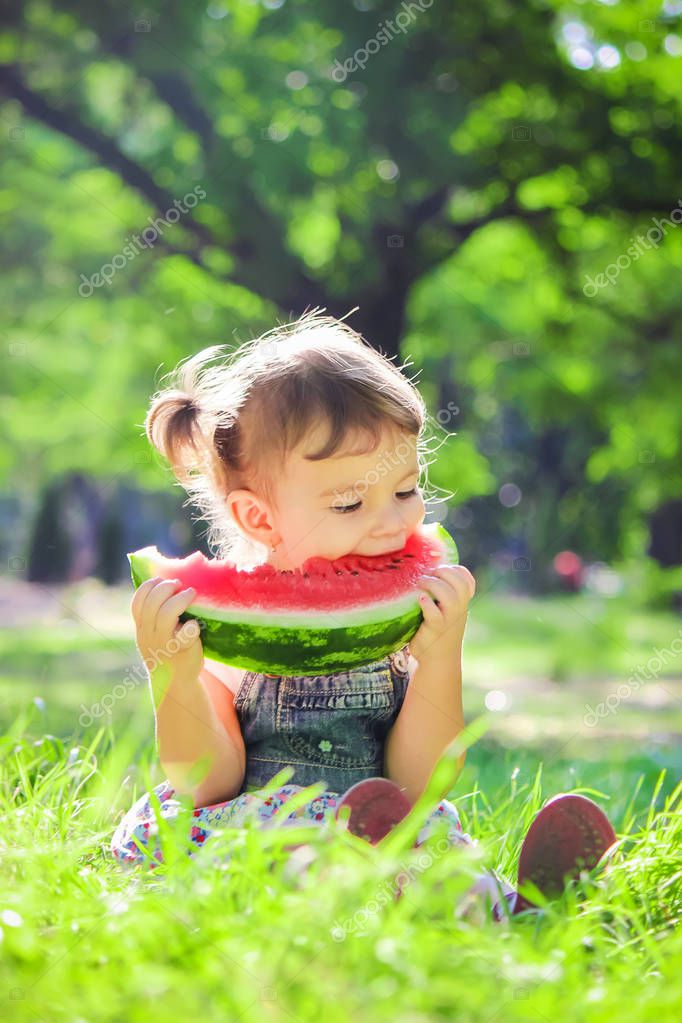 coli. These bacteria live on the surface of produce, and even watermelon can put you at risk. Before feeding your baby watermelon, wash the outside of the melon rind with soap and water. This prevents any germs on the outside of the melon from getting on the knife when you cut it and contaminating the fruit inside.
coli. These bacteria live on the surface of produce, and even watermelon can put you at risk. Before feeding your baby watermelon, wash the outside of the melon rind with soap and water. This prevents any germs on the outside of the melon from getting on the knife when you cut it and contaminating the fruit inside.
Allergies. When you first introduce your baby to solid foods, you need to take things slowly. Your baby may be allergic to certain foods, and you won’t know until they try those things. Introduce your baby to one food at a time, and wait a few days before introducing them to something new. This way, you’ll be able to spot any allergic reactions, and you’ll know exactly what might have triggered the symptoms.
Choking hazards. Finally, choking hazards are a big risk with your baby. Only feed them mashed and pureed watermelon until you’re confident they can chew and swallow larger chunks.
from what age can be given, basic rules
Watermelon is considered a healthy berry that contains many vitamins and microelements. Many parents try to quickly introduce such a product into the baby's diet, but this must be done in compliance with certain rules. It is best to ask a specialist to clarify at what age watermelon can be given to children.
Many parents try to quickly introduce such a product into the baby's diet, but this must be done in compliance with certain rules. It is best to ask a specialist to clarify at what age watermelon can be given to children.
Contents:
- 1 Benefits and harms of berries for the child's body
- 2 When to introduce watermelon complementary foods
- 3 In what form is it better to give
- 4 Basic rules for the introduction of berries in the diet
- 5 What if the acquaintance with the watermelon did not go according to the plan
- 5.1 The child swallowed the seed
- 5.2 Allergic reaction 9000 5.3 Poison
9000 5.4 Violation Violation stool
Many mothers are interested in the question of what is useful watermelon for children. Its sweet pulp serves as a source:
- folic acid;
- fiber;
- pectins;
- vitamins;
- potassium;
- manganese;
- iron.
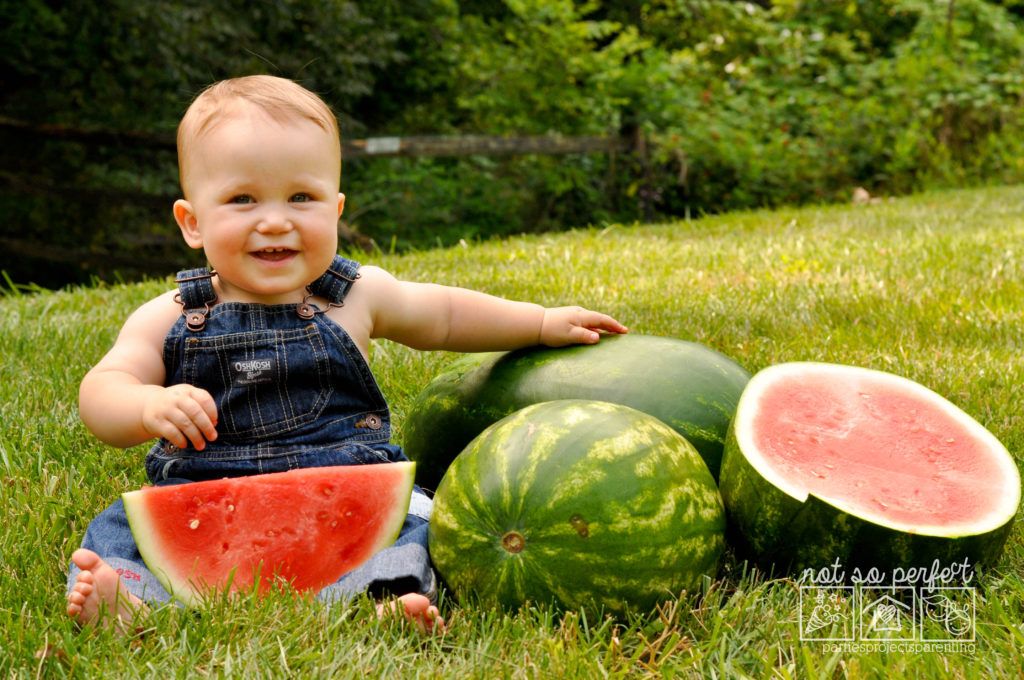
To understand the benefits and harms to the health of the child, you should study the valuable properties of the sweet berry. The pulp contains a lot of water, which gives the watermelon a diuretic property. Thanks to beta-carotene, it is possible to improve the functioning of the immune system, quickly cope with physical stress and improve mood. The lycopene contained in the berry several times reduces the risk of developing cancer, restores normal digestion and normalizes cholesterol metabolism.
The use of a sweet product in moderation allows you to achieve the following effect:
- normalizes the state of the nervous and muscular systems;
- improves the functioning of the heart and vascular system;
- accumulated toxins and toxic substances are removed from the blood;
- manages to lose weight;
- improves the condition of the eyes, skin and bones.
With the help of watermelon, one can quickly cope with thirst and hunger. It contains a large amount of iron, so keeping such a product on the menu helps prevent the development of anemia.
It contains a large amount of iron, so keeping such a product on the menu helps prevent the development of anemia.
Important! Eating berries in excess can harm the body. It can cause allergies, which manifests itself in the form of vomiting, rhinitis, rashes on the skin and itching.
Rarely, the use of the product in large quantities may result in breathing problems and anaphylactic shock.
When to introduce watermelon complementary foods
Experts differ on the age at which watermelon can be given to a small child. Most of them advise offering babies a slice of berries after a year. Other pediatricians argue that it is better not to feed the pulp to children who are not yet two years old. If the product is introduced too early into the menu, there is a high probability of disruption of the digestive tract and malfunctioning of the kidneys.
Whether children under one year of age can eat watermelon should definitely be checked with a pediatrician. This is due to the high content of fiber and liquid in it. This combination increases the load on the kidneys and intestines of the baby, which leads to colic and abdominal pain. Perhaps the appearance of flatulence, diarrhea, exacerbation of pathologies of the genitourinary and digestive systems. It is for this reason that one should refrain from introducing watermelon to the menu of children under one year old.
This is due to the high content of fiber and liquid in it. This combination increases the load on the kidneys and intestines of the baby, which leads to colic and abdominal pain. Perhaps the appearance of flatulence, diarrhea, exacerbation of pathologies of the genitourinary and digestive systems. It is for this reason that one should refrain from introducing watermelon to the menu of children under one year old.
You can offer a piece of mashed pulp of watermelon to a one-year-old child for testing, but on condition that the gastrointestinal tract is working steadily. The allowable daily allowance for 2-year-old children is 100 grams, and after 3 years - 150 grams.
What is the best way to give
Parents should know how to give watermelon to their children. You can offer fresh pulp, after clearing it of seeds. In the event that the child is too small, then you can chop the berry in a nibbler. After he learns to chew, you can cut the berry into pieces.
There are many ways to cut watermelon.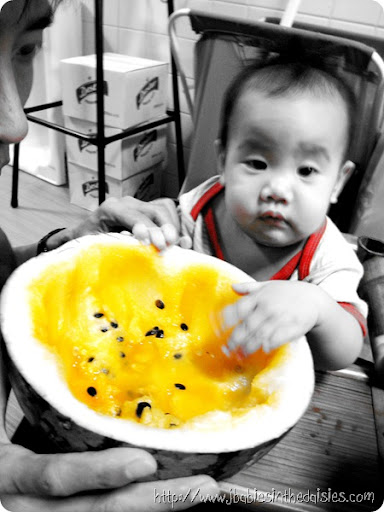 At an older age, vitamin salads can be prepared from watermelon cubes by adding other fruits and yogurt to them. Dessert is recommended to be given separately and not mixed with the main feeding, which will prevent fermentation in the stomach of other food.
At an older age, vitamin salads can be prepared from watermelon cubes by adding other fruits and yogurt to them. Dessert is recommended to be given separately and not mixed with the main feeding, which will prevent fermentation in the stomach of other food.
Basic rules for introducing berries into the diet
The pulp should only be offered to the baby from the middle of the fruit, since all the chemicals accumulate near the peel. Before cutting the watermelon, it must be thoroughly washed under water and preferably with soap.
Important! Early watermelons often contain harmful chemicals that are introduced into them during cultivation. To prevent unpleasant complications, it is recommended to buy sweet berries only in season and take the choice of striped berries seriously.
Need to know when to give watermelon to a child. It is recommended to give the baby a sweet berry to try in the season. It is better not to introduce him to such a product at the beginning of summer, since the pulp is likely to contain a large amount of nitrates.
What to do if acquaintance with watermelon did not go according to plan
Incorrect acquaintance of the baby with the product can negatively affect his well-being.
Child swallowed seed
When a child swallows one stone from a watermelon, do not panic. It will not bring any harm to the body and will come out naturally along with the feces. On the contrary, watermelon seeds, like the oil from them, have many useful properties. However, a serious danger to well-being is the ingestion of too many watermelon pits into the intestines. In this case, there may be problems with the stool in the form of constipation, pain during the act of defecation, and even intestinal obstruction. It is for this reason that before feeding, it is imperative to clean the watermelon from the seeds.
Allergic reaction
Allergy to ripe watermelon in a child can occur regardless of the age of its introduction into the baby's diet. Parents may notice the following symptoms:
Parents may notice the following symptoms:
- redness of the skin in the cheek area;
- edema;
- red rashes on the skin;
- blisters.
Sometimes, if your baby is allergic to watermelon, you may experience nausea and vomiting, as well as a violation of the stool in the form of constipation or diarrhea. At the first symptoms, it is necessary to exclude the product from the child's menu and offer it again no earlier than a year later. With severe signs of allergy, it is imperative to show the child to a specialist.
Poisoning
The main manifestation of watermelon poisoning in young children is indigestion. A few hours after eating a treat, certain symptoms may appear. However, the symptoms of poisoning may begin to bother even after a few days.
After eating watermelon and malfunctioning of the stomach, you may experience:
- pain in the abdomen;
- weakness;
- headache;
- diarrhea;
- vomiting;
- nausea.

Important! At the first symptoms of poisoning, it is necessary to provide the child with first aid as soon as possible. You should drink it with water as often as possible and offer special formulations, the action of which is aimed at restoring the water-salt balance.
You can relieve the baby's condition with the help of sorbents and antispasmodics.
Violation of the stool
Watermelons that appeared on the shelves out of season contain a lot of nitrates. The introduction of such a berry into the diet can cause a violation of the stool. In addition, after eating watermelon, the baby often has red feces. After eating a piece of an unsuitable product, the child begins to go to the toilet too often, and the stool resembles water in consistency. With diarrhea from watermelon, particles of undigested food, bloody patches and mucus may be present in the feces.
When asked if a child with diarrhea can eat watermelon, experts answer in the negative. Together with the stool, fluid is excreted from the body, which can subsequently lead to dehydration. The main symptom of this condition is dryness in the mouth, crackling of the lips and roughness of the skin.
Together with the stool, fluid is excreted from the body, which can subsequently lead to dehydration. The main symptom of this condition is dryness in the mouth, crackling of the lips and roughness of the skin.
Contraindications for use
Almost everyone is allowed to eat watermelon in moderation. However, it is best to buy sweet berries from late summer to September, because it is during this period that they ripen naturally and contain a minimum of nitrates.
It is not recommended to eat a lot of watermelon for people suffering from:
- diabetes mellitus;
- urolithiasis;
- acute intestinal pathologies.
In addition, a contraindication to eating berries are failures in the functioning of the kidneys. It is forbidden to enter it into the menu if there are problems with urine excretion.
Parents should know why they should not give their child too much sweet berries. It contains excess fiber and fluid, which can complicate the functioning of the kidneys and intestines.
Watermelon is a useful product that serves as a source of valuable substances. In the nutrition of children, he occupies not the last place. It not only fills the body with valuable elements, but also improves the functioning of organs and systems. However, to get the joy of eating a sweet berry, you need to know at what age you can eat it and in what quantity.
Read also interesting on the topic:
How much watermelon can you eat per day?
How to determine the ripeness of the fruit when growing and when buying
Watermelon jelly - lick your fingers!
Expert in touch: is it possible to feed watermelon to children | 76.ru
All newsMilitary planes flew over the Yaroslavl region. What was it. Video
When partial mobilization will end: news around the NWO for October 14
Chairman of the Yaroslavl Duma discussed measures to support members of the NWO at a council of legislators
Electric substation caught fire after shelling in Belgorod
“I should have attacked my husband”: a mother who threw her out of the window 4 year old daughter burst into tears in court
A 10-year-old pug has been using a wheelchair for almost a year. Watch his touching story
Watch his touching story
Will they pay for the teachings? All about the financial side of partial mobilization in the Yaroslavl region
As a student: the mysterious story of an ageless Japanese woman who at 54 looks like 17 years old (see her amazing photos)
Mikhail Evraev instructed to reduce the staff of officials in the Yaroslavl region
In Yaroslavl for five hours Moskovsky Prospekt will be blocked: when and why
“The best way not to go crazy”: the manager, escaping from stress, made a loft window in Khrushchev - how much did it cost
From Bach to rock: a review of concerts, exhibitions and film screenings for the next weekend in Yaroslavl
About partial mobilization and strikes on Ukraine: main statements from Putin's press conference
The first trial was held in the Yaroslavl region on the complaint of a mobilized
Putin said that there was no need for massive strikes on Ukraine
It became known how many mobilized people have already been sent to combat units
Vladimir Putin told when the partial mobilization will end
“I could have said: “Treat yourself, and I will find a healthy person. ” 20-year-old Eva put her fiancé crippled in battle on her feet and married him
” 20-year-old Eva put her fiancé crippled in battle on her feet and married him
Crushed passenger seat: in Yaroslavl, a car crashed into a train
For a post on a social network: an activist and lawyer from Yaroslavl was convicted under an article about discrediting the Armed Forces of the Russian Federation
From State Support to Family Mortgage: a new opportunity to reduce the interest rate has appeared
“They take people off the streets for overexposure.” A Russian who moved to Georgia told what is happening there now
“There will be cutbacks”: deputies in Pereslavl were outraged by the optimization of the apparatus of officials
Part of the bridge on the highway collapsed in the Yaroslavl region with unbearable pain. Stories of mobilized
Probation for damages of 5 million: the ex-director of the Yaroslavl overhaul fund was convicted
Additional trains will be launched between Moscow and Yaroslavl on the November holidays
Six buses will temporarily change the traffic pattern in Yaroslavl
Policemen arrange raids to search for evaders. When can they serve a summons?
When can they serve a summons?
“Dad, I won’t call yet, they’ll drop us tomorrow”: what the relatives of the dead mobilized people say0003
"We're somewhere in the fields, I'll call again." A lawyer mobilized from St. Petersburg died after an express preparation for battle
A summons instead of a trip: is it possible to leave Russia if you are stopped by border guards
“Gesture of goodwill”: the State Duma confirmed the postponement for fathers with three children
“And so we are suffocating ”: a new asphalt plant is being built near the border of Yaroslavl
“Everyone is afraid of a nuclear explosion”: what drugs are Yaroslavl residents sweeping away from pharmacies due to partial mobilization
Father didn’t understand and didn’t accept: confession of the mother of a volunteer from the Yaroslavl region who went to the NMD
Yaroslavets burned to death in his car
“People like that shouldn’t walk the streets”: a man who was beaten up by a zumba dancer died in Yaroslavl
All news
Children should not buy sliced watermelons. Dot. Convincing arguments from experts in the field of children's diet - specialists from the Social Nutrition Combine.
Dot. Convincing arguments from experts in the field of children's diet - specialists from the Social Nutrition Combine.
Photo: Alexandra Savelyeva
Share
Watermelons are now less dangerous than in July, but still not as good as in September. The fact is that the famous Astrakhan berries ripen in August, plus it takes time for delivery to central Russia. But you should not be afraid of nitrates and pesticides if watermelon is bought in markets and stores where mandatory control is provided with research in a food laboratory. Spontaneous collapses, halves, quarters, offers to cut a piece “for trial” - this is the main source of danger, and children most often suffer from this.
– The sweet environment and high air temperature is a resort for bacteria and germs. Their reproduction occurs at a tremendous speed, so intestinal disorders can be considered luck against the background of all possible forms of poisoning. The child's body is very susceptible. The infection can get through a dirty knife, and by buying cut watermelons, you bring a direct threat to the health of your family into your home, warns Deputy General Director - Chairman of the Board of Directors of Social Nutrition Plant LLC Maria Turaeva.
The child's body is very susceptible. The infection can get through a dirty knife, and by buying cut watermelons, you bring a direct threat to the health of your family into your home, warns Deputy General Director - Chairman of the Board of Directors of Social Nutrition Plant LLC Maria Turaeva.
You can't buy watermelons from stalls along the roads. Exhaust gases, harmful substances, including heavy metals, are absorbed through the peel and accumulate in the pulp. When buying a striped berry in a tent, you should pay attention to storage conditions. Sellers must not store their goods on the ground, only on special trays at a height of at least 20 cm from the surface. Do not cut or taste watermelons on the street, do not buy beaten and cracked specimens. Experts do not recommend storing cut berries even in the refrigerator. And nutritionists advise not to lean on sweets for those who have problems with being overweight.
- In my practice, there was a case when one of my patients chose seemingly harmless watermelons for fasting days and was very surprised and upset when she saw a plus on the scales.



